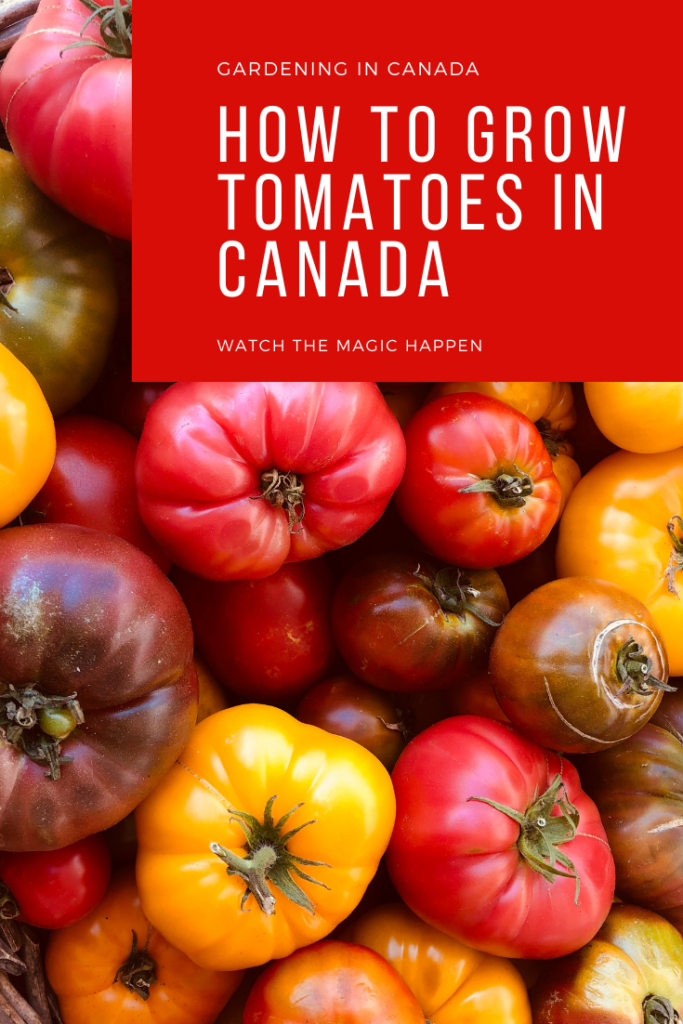- Canada’s Growing Zones Are Changing 2024 - January 12, 2024
- Attracting Wildlife To The Garden - May 16, 2023
- How To Garden Near A Septic Tank - May 9, 2023
A well-liked and adaptable vegetable, tomatoes can be cultivated across Canada. You may effectively produce tomatoes in your yard or in containers with the appropriate setup and attention.
If you are new to this blog my name is Ashley and I am a soil scientist. I am located in a Canadian Zone 3 and a USDA Zone 4. I write articles, make YouTube videos, Instagram & Facebook posts all designed for Canadians and Cold Climate gardeners using science-based methods. If you are looking for anything specific be sure to let me know in the comments down below.
How to grow tomatoes in Canada
- Pick the right variety
- Know the best location
- Fertilizer – skip the magnesium calcium and focus on pH
- Watch for pests and diseases, use beneficial bugs
Pick the appropriate variety
Not every tomato variety is suitable for the climate of Canada. To find varieties that will thrive during Canada’s shorter growing season, look for cultivars that are labeled as “determinate” or “indeterminate.” Siberian and Sub Arctic Plenty are two popular determinate kinds, whereas “Early Girl” and “Big Boy” are typical indeterminate varieties.
Plant at least 3 different varieties to ensure a healthy harvest. Diversity is key to making sure you are not limited by a disease or pest that favorites on a variety of tomato over another.
Best tomato varieties for growing in Canada
- Early Girl – early harvest and avoids blight
- Manitoba – early harvest & determinate
- Optimax – abundant and for sauce
- Beefsteak – Large and hardy
- Yellow Germans – Colourful with flavour
Decide where to put it
Sunlight and well-drained soil are preferred for tomatoes. Additionally, they require at least 6 hours a day of direct sunlight. Consider beginning your tomatoes indoors and transferring them outdoors once it gets warm if you reside in a region with a limited growing season.
As the plant develops, it will require a stake or cage to support the weighty fruit. By keeping the fruit above the ground, this will lessen the risk of disease and keep the branches from breaking.
Watering
Tomatoes require regular watering, especially as the fruit grows. Keep the soil continually moist, but watch out for disease-causing over-watering.
Because they are big feeders, tomatoes require fertilizer all during the growing season. When planting and then once again every 4-6 weeks, use a balanced fertilizer, such as a 10-10-10.
The myth of the tomato
Due to its abundance in the earth’s crust, magnesium and calcium are often not in short supply in Canadian soils. In the earth’s crust, calcium is the fifth most prevalent element and magnesium is the eighth most abundant element, making up around 2.4% of the total composition. Both substances can be found in a variety of rocks and soils, including those that are found in Canada.
Furthermore, these elements can be simply added to soils by farmers and gardeners because they are commonly available in many popular fertilizers. Magnesium is also a necessary component for many plant metabolic processes, therefore it is present in most plant tissues and does not deplete the soil of magnesium.
Keep an eye out for pests and diseases
In Canada, aphids, tomato hornworms, and whiteflies are common tomato pests. When inspecting the leaves, look for any odd damage or discoloration. If you notice any pests or diseases, act fast.
You may easily cultivate tasty, ripe tomatoes in your Canadian garden by following these instructions. Keep in mind that it takes time for tomatoes to grow and ripen. But if you take a little time and care, you’ll soon be able to enjoy some fresh, homegrown tomatoes.
To sum it up:
- Select a cultivar that will thrive in Canada’s shorter growing season.
- Choose a location with adequate sunlight and well-drained soil.
- Support the plant as it develops.
- Water the plants consistently.
- Throughout the growing season, fertilize.
- Observe for illnesses and pests.

